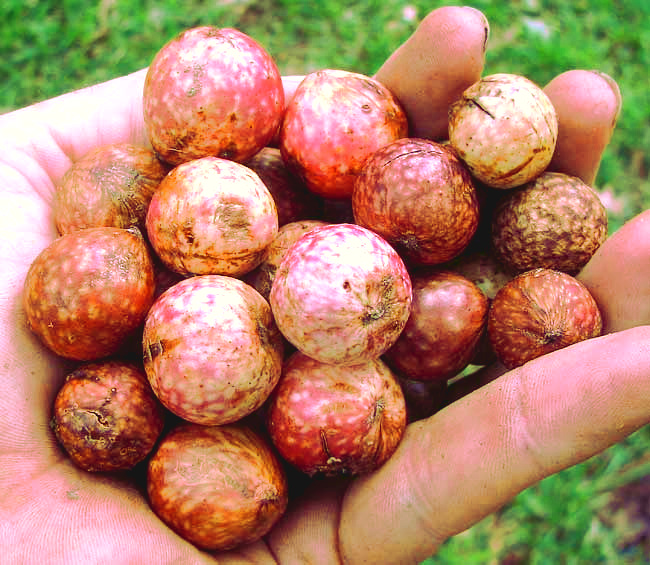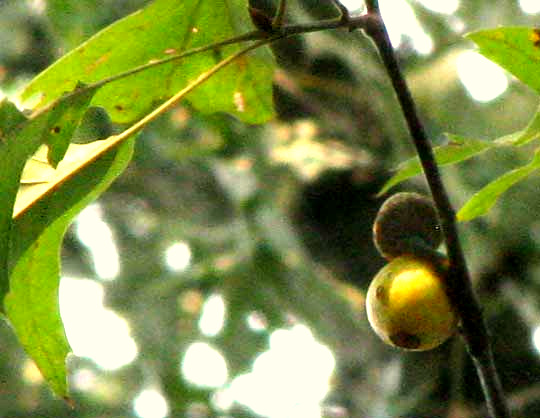Excerpts from Jim Conrad's
Naturalist Newsletter

from the October 18, 2009 Newsletter issued from the woods of the Loess Hill Region a few miles east of Natchez, Mississippi, USA
ACORN PLUM GALLS FALLING
Ridgetops in this area usually are populated with oaks of various species, and nowadays as you hike along those ridges or even walk around your house if you have oak shade trees you see a lot on the ground of what's shown above.
Some pictures on the Internet identify these as oak apple galls, but oak apple galls are something different, and these are much more interesting. They're Acorn Plum Galls, caused by the gall wasp Amphibolips quercusjuglans, a member of the Gall Wasp Family, the Cynipidae, and instead of forming on leaves or stems as most galls do, they form on the scaly cups of acorns.
Despite the galls' commonness here, it was hard to figure out exactly what they were. Naturally first I asked my insect expert Bea in Ontario if she knew anything about them. Growing uncharacteristically circumspect at the prospect of tackling the huge, complex Gall Wasp Family, Bea reminded me that just in North America we have over 750 species in 49 genera in the Gall Wasp Family. Furthermore, "Each species makes a characteristic gall on a specific part of the plant. Many make galls on oaks. Most have a complex life cycle with a parthenogenetic generation and a sexual one. Each generation makes galls of a different appearance and on different parts of the plant."
Bea did find me a page, however, where someone had labeled a gall like those in my picture as an Acorn Plum Gall, and this turned out to be one of those times when the common name was specific enough to lead to the exact technical name, and more information about the species.
This week I've spent several hours looking for a gall on an acorn cup so I could photograph it arising from the cup. The best I could find, an immature one 20 feet up, is shown on a Southern Red Oak acorn below:
 .
.
Acorn Plum Galls are solid and juicy inside, and rather heavy for their size. Pictures on the Internet show cut-open ones with a single, white grub curled up in the gall's center, slowly eating the gall's tissue as it grows. Eventually the grub will metamorphose into a pupa, and then into a tiny adult gall wasp.
from the August 12, 2012 Newsletter issued from the woods of the Loess Hill Region a few miles east of Natchez, Mississippi, USA
ACORN PLUM GALLS FORMING
Nowadays the galls are forming on immature acorn cups. You can see one arising from the base of a Black Oak's acorn cup below:
